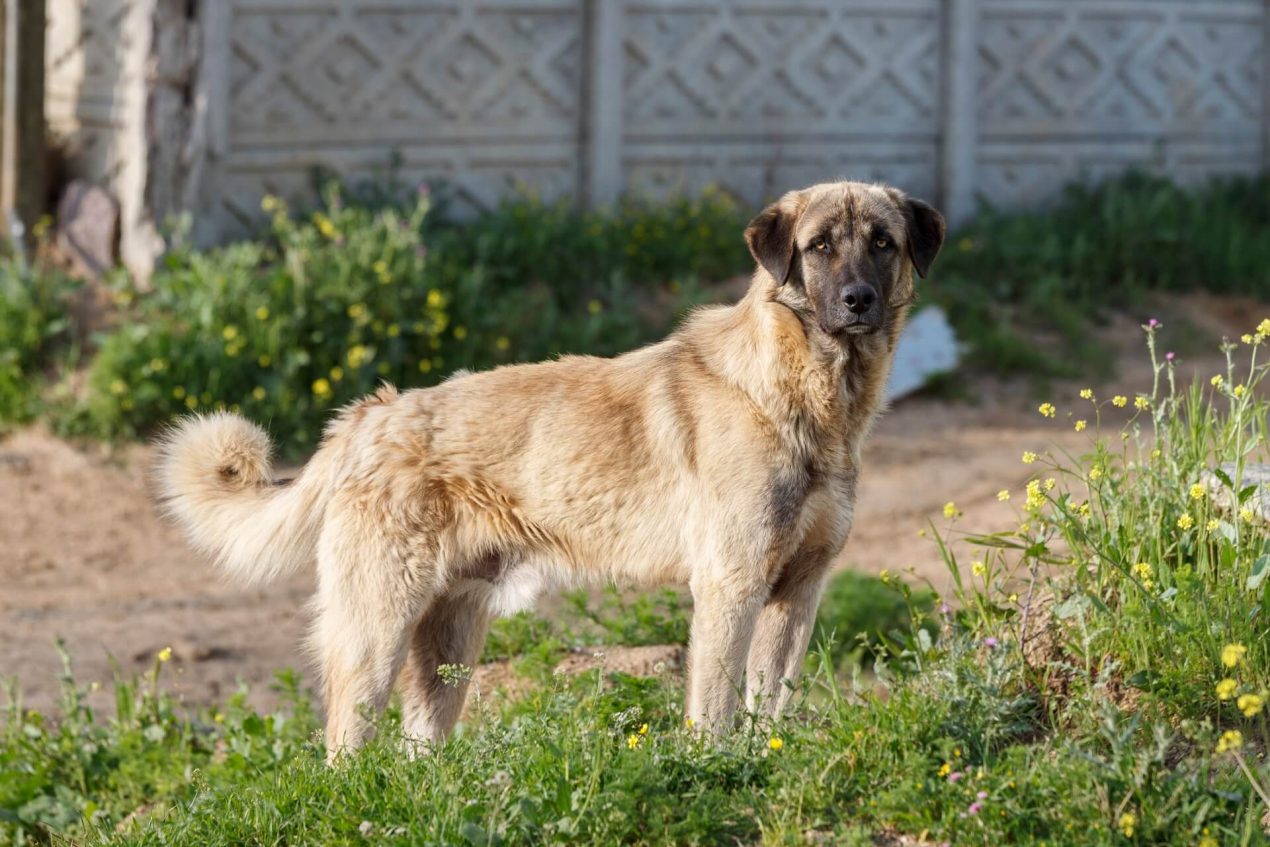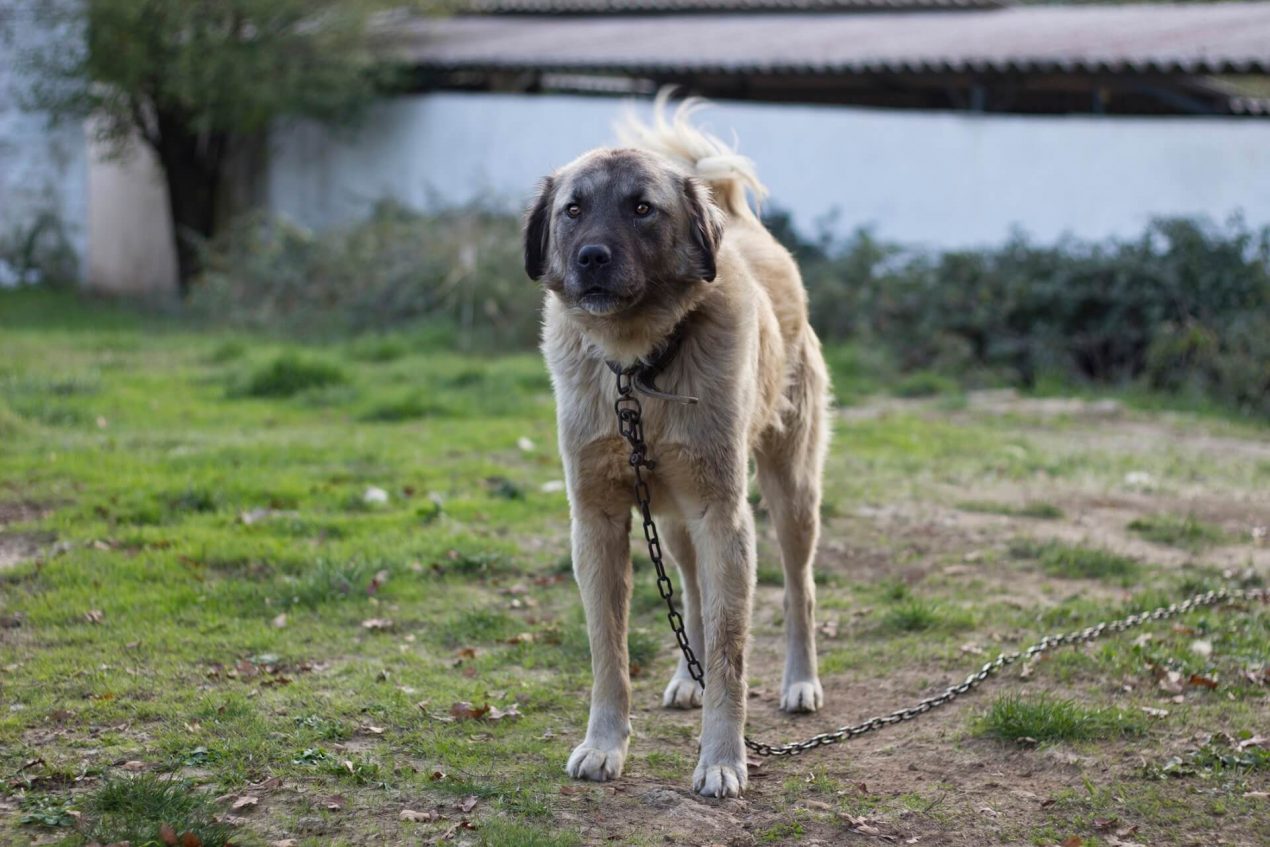The Kangal is a large shepherd dog from Turkey, serving as a working companion and status symbol in its homeland. It also stands as a symbol of strength, courage, and pride. In this profile, you’ll find everything about the history, nature, and care of the breed.
History of the Kangal
The Kangal is an ancient breed, officially recognized only since June 2018. These dogs likely descended from the shepherd dogs of nomadic tribes. Particularly in Central and Eastern Anatolia, shepherds used the ancestors of today’s dogs for independent protection of sheep herds as early as the 12th century.
Due to their enormous size and strength, the dogs could defend their flocks against wolves and bears. The city of “Kangal” had an exceptionally large population of these dogs, giving the breed its name. At that time, however, the dogs were called Karabaş, which means “black head.”
In the 1960s, the first dogs arrived in Great Britain, where enthusiasts founded the “Anatolian Karabash Dog Club.” Together with other dog breeds from Turkey, the dogs gained initial recognition as Anatolian shepherd dogs in the united States. Since the 1970s, they have been popular service dogs in the Turkish military and police. In June 2018, the FCI recognized the Kangal as a distinct breed. Since then, it has been classified in the FCI Group 2 “Pinschers and Schnauzers – Molossoid Breeds – Swiss Mountain and Cattle Dogs,” in Section 2.2 “Mountain Dogs.”
Breed Overview
GROUP: Herding
HEIGHT: 28-34 inches for males, 28-32 inches for females
WEIGHT: 90-150 pounds for males, 90-120 pounds for females
COAT: Short, double coat with a dense undercoat
COAT COLOR: Fawn, white, or sable
LIFE SPAN: 12 to 15 years
TEMPERAMENT: Loyal, protective, fearless, intelligent
HYPOALLERGENIC: No
ORIGIN: Turkey
Nature and Character
The Kangal is a loyal dog, notable for its balanced and calm demeanor. Since the dogs were sometimes left to their own devices during flock protection for weeks, their descendants are very independent and undemanding. They are rather distant to suspicious towards strangers. They do not hesitate to defend their flock or family against potential enemies. However, guard dogs often resort to threatening gestures to scare away strangers.
| Affection Level | Medium |
| Friendliness | Medium |
| Kid-Friendly | Medium |
| Pet-Friendly | Medium |
| Exercise Needs | Medium |
| Playfulness | Medium |
| Energy Level | High |
| Trainability | Medium |
| Intelligence | Medium |
| Tendency to Bark | Medium |
| Amount of Shedding | Medium |
Appearance of the Kangal
The Kangal is an elegant and large dog with an impressive appearance. Males can reach up to 81 centimeters in height and 65 kilograms in weight. Since the shepherds never selectively bred, size and weight evolved naturally. The dog’s head shape resembles that of a molosser, but with an attentive and alert gaze.
The medium-sized ears hang flat against the skull. When at rest, the tail is lightly curled upward. The dogs’ coat is short to medium-length and dense. The official standard allows for all colors. Many dogs are light brown to light gray, with a dark brown to black mask.

Puppy Training
The Kangal is not an easy-to-train dog. It cannot be suppressed through harshness and violence. The dog wants to be seen as an equal partner. Training therefore works only with mutual trust. Sensitivity and consistency are also required. Even a well-trained representative of the breed retains its independence throughout life.
Particularly important for the large dog is initially good socialization. On the other hand, especially males often react aggressively to other dogs. Visiting a dog school and contact with conspecifics is therefore mandatory with the puppy.
You must set clear rules and boundaries from the beginning so that your Kangal understands what is expected of him. Reward-based training is particularly effective. Praise your Kangal profusely when he shows desired behavior, whether it’s sitting or coming on command. Use simple words like “Sit” and “Come” to make your commands clear. Make sure to convey to your Kangal that you are the leader, but always do so with love and patience. Avoid harsh punishments, as these could frighten your Kangal.
Activities with the Kangal
Due to its size, the shepherd dog is not suitable for conventional dog sports. Fast and sustained movement can be harmful to its joints. Hectic games excite and overwhelm it quickly. The best activity for a Kangal is its traditional use as a guard dog for sheep herds. If you don’t use him accordingly, you’ll need to take long walks with him every day.
A large, high-fenced garden for guarding also brings him joy. Quiet games like nose work and puzzle games bring him great pleasure. In its homeland, the Kangal often serves as a guard dog and is kept chained in the garden. Such treatment should be avoided, as the dog, like any other, wants to be part of the family.

Care of a Kangal
Taking care of your Kangal is important to ensure he stays healthy and happy. The Kangal’s coat is thick and dense, so regular brushing is necessary to avoid matting. Brush your Kangal at least once a week to remove loose hair and stimulate blood circulation in his skin.
Bathe your Kangal only when necessary to avoid stripping away his natural oils. Keep an eye on his claws and trim them as needed. The ears should be regularly checked for dirt and signs of infection. Don’t forget to keep your Kangal’s teeth clean by giving him special dog dental care products.
Health and Hereditary Diseases
Since the breeding of the Kangal was never solely for its appearance, it is robust in terms of health. The life expectancy of 12 to 14 years is very high for a dog of this size. Its dense fur protects it from sun and frost, allowing it to be outdoors in any weather without problems. Since the dogs lived on food scraps for decades, they are undemanding when it comes to food. Nevertheless, you should naturally pay attention to a healthy diet. Obesity is particularly harmful to large dogs.
Watch out for signs of illness such as increased salivation, loss of appetite, or sudden changes in behavior. Regular visits to the vet are crucial to ensure your Kangal is in top condition. Kangals may be susceptible to certain hereditary diseases, so it’s important to choose a responsible breeder who cares about the health of his dogs. Possible hereditary diseases include hip dysplasia and eye problems.
A healthy lifestyle, regular exercise, and a balanced diet are also important for promoting your Kangal’s health. Additionally, shepherd dogs should not jump or climb stairs much, as they are prone to joint problems such as arthritis.
Does the Kangal Suit Me?
Acquiring an Anatolian Shepherd Dog should be carefully considered solely because of its size. Keeping a Kangal in an apartment in the city is out of the question. As a family dog, it is suitable to a certain extent. Unlike most breeds, the robust dog can live outdoors without any issues.

If you decide to get a shepherd dog, you should first look into adopting from an animal shelter. Many representatives of the breed or mixes end up there after an impulsive acquisition. If you prefer to buy a puppy, you should look for a reputable breeder nearby. Make sure they are affiliated with the AKC (American Kennel Club) and have experience with breeding. Here, the well-being of the animals is usually not the top priority. Don’t fall for supposedly cheap offers from the internet. Also, you should definitely refrain from purchasing out of pity to avoid supporting illegal puppy trade.
Interesting and Worth Knowing
Unfortunately, the Kangal is particularly known in United States for negative headlines. In 2017, there was a fatal incident involving a Kangal. The shepherd dogs have it in their genes to act independently. They are supposed to defend sheep herds in large areas. The vigilant dogs are quickly judged as aggressive and dangerous due to improper care.
Often, inexperienced dog owners bring back a puppy from vacation and quickly become overwhelmed. Many Kangals end up in animal shelters and are difficult to rehome. Always remember that a dog becomes dangerous due to improper training and lack of knowledge from the owner. A four-legged friend is generally not inherently evil.
However, an example from Wyoming shows that it can be different. At an animal shelter two young Kangals serve as livestock guardian dogs, protecting the sheep from wolves. They both do a great job and greet human visitors in a friendly and wagging manner.
Do you have a Kangal or are you planning to get one? Share with us in the comments what you think makes them so special!


